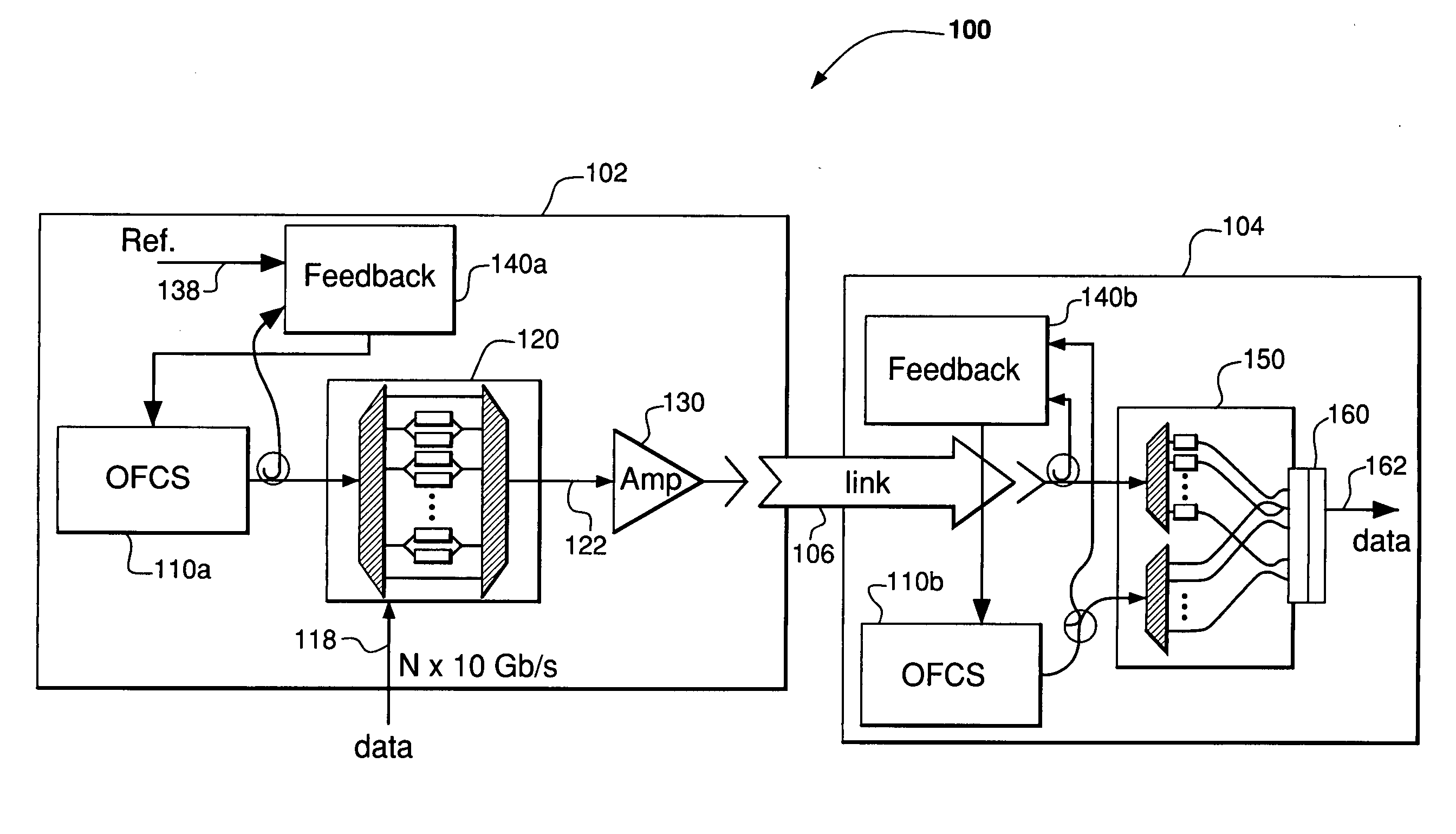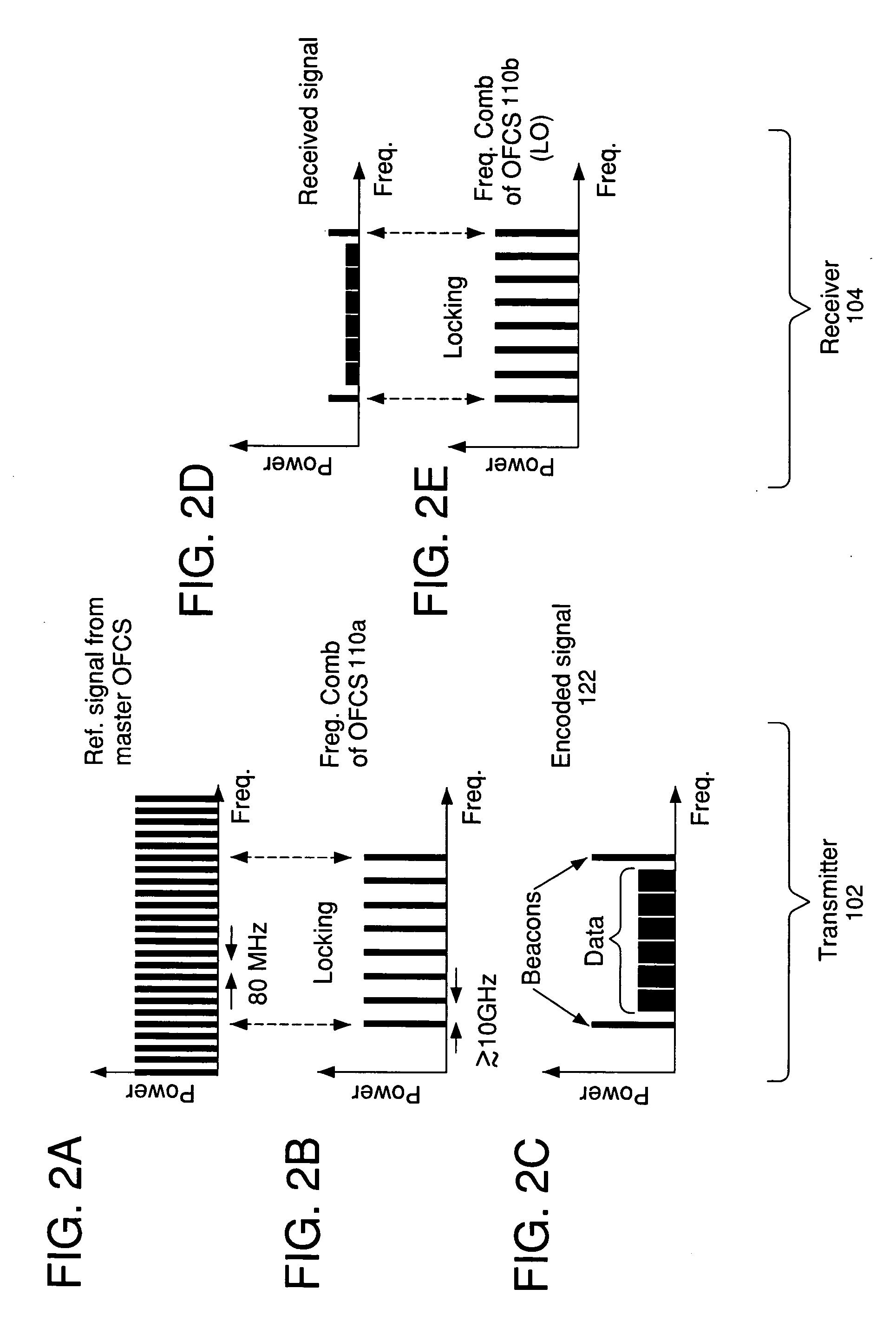Use of beacons in a WDM communication system
a communication system and wavelength division multiplexing technology, applied in multiplex communication, optics, instruments, etc., can solve the problems of difficult phase lock to the carrier wavelength, complex task of providing multiple phase-locked lo signals for multiple wavelengths, and complicating the use of homodyne psk in prior-art wdm systems. , to achieve the effect of simple phase-lock circuitry
- Summary
- Abstract
- Description
- Claims
- Application Information
AI Technical Summary
Benefits of technology
Problems solved by technology
Method used
Image
Examples
Embodiment Construction
[0021]FIG. 1 shows a WDM communication system 100 according to one embodiment of the invention. System 100 has a WDM transmitter 102 and a WDM receiver 104 coupled via an optical communication link 106. Transmitter 102 has an optical-frequency comb source (OFCS) 110a that is adapted to generate a plurality of frequency (wavelength) components. In one configuration, the frequency components can be substantially uniformly spaced. In another configuration, some of the frequency components can be suppressed or filtered out to create a plurality of non-uniformly spaced frequency components. Hereafter, a plurality of frequency components generated by an OFCS analogous to OFCS 110a is referred to as a “frequency comb” and each individual frequency component of a frequency comb is referred to as a “comb line.”
[0022] An optical modulator 120 coupled to OFCS 110a is configured to modulate some or all of the comb lines generated by that OFCS with data that are provided by a data stream 118. Mo...
PUM
 Login to View More
Login to View More Abstract
Description
Claims
Application Information
 Login to View More
Login to View More - R&D
- Intellectual Property
- Life Sciences
- Materials
- Tech Scout
- Unparalleled Data Quality
- Higher Quality Content
- 60% Fewer Hallucinations
Browse by: Latest US Patents, China's latest patents, Technical Efficacy Thesaurus, Application Domain, Technology Topic, Popular Technical Reports.
© 2025 PatSnap. All rights reserved.Legal|Privacy policy|Modern Slavery Act Transparency Statement|Sitemap|About US| Contact US: help@patsnap.com



